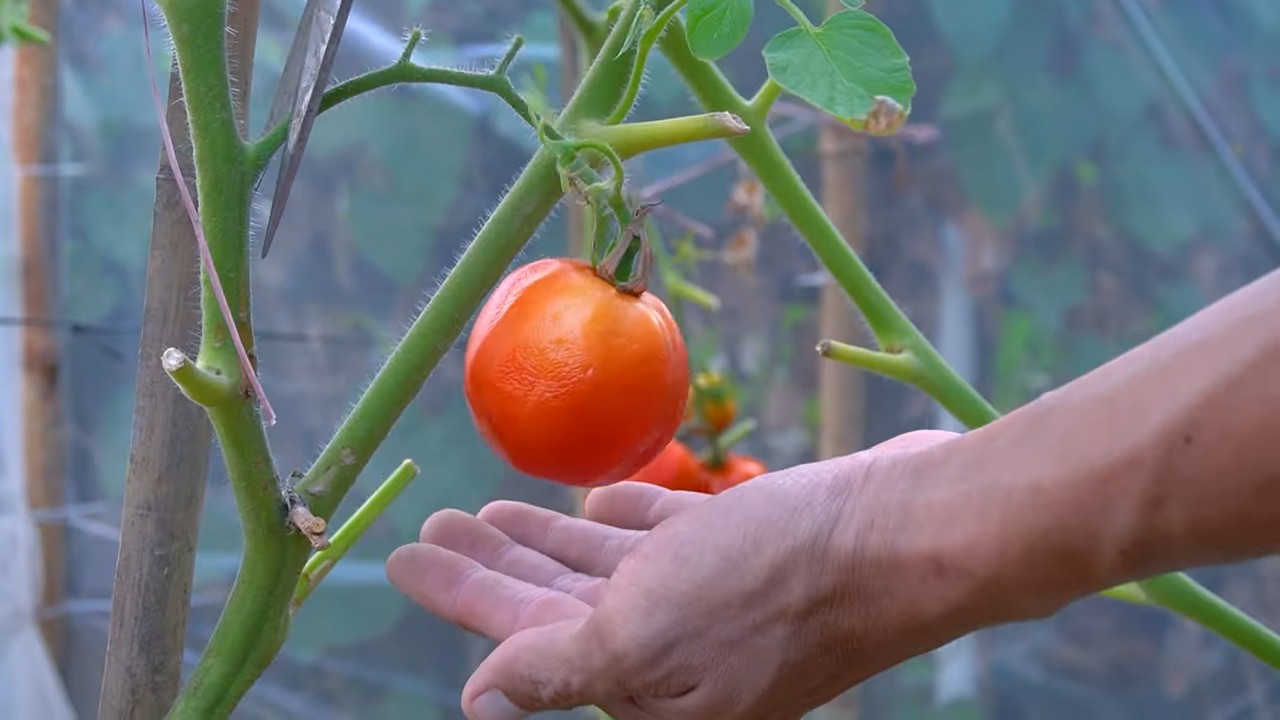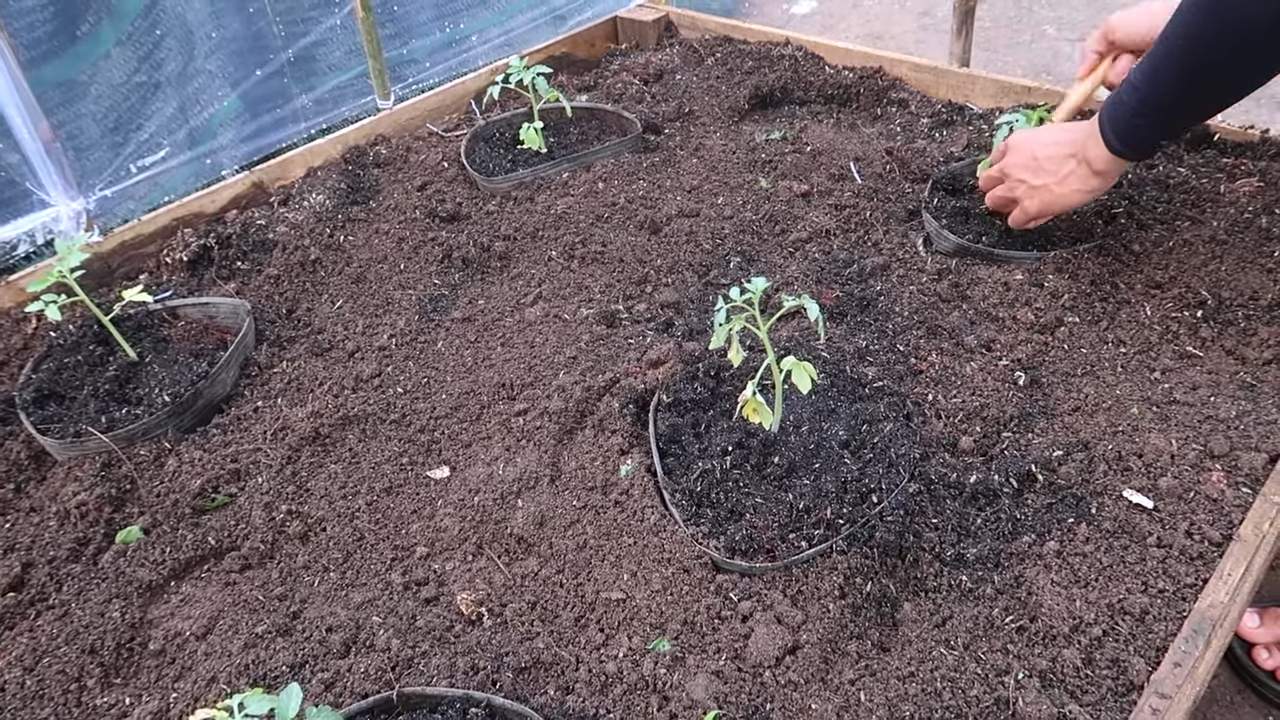Grow Long Beans at Home and unlock the secrets to a bountiful harvest right in your backyard! Imagine stepping outside and picking fresh, vibrant long beans for your dinner – a truly rewarding experience. For centuries, cultivating beans has been a cornerstone of various cultures, providing sustenance and connecting people to the land. From ancient civilizations in South America to traditional Asian gardens, the long bean, also known as the yardlong bean or asparagus bean, has held a special place in culinary traditions.
But why should you bother learning how to grow long beans at home? Well, store-bought vegetables often lack the freshness and flavor of homegrown produce. Plus, you have complete control over what goes into your garden, ensuring you’re eating healthy, organic food. This DIY guide is packed with simple, effective tricks and hacks that will help you overcome common gardening challenges and maximize your yield. Whether you’re a seasoned gardener or just starting out, I’m here to guide you through every step of the process, from selecting the right seeds to harvesting your delicious long beans. Let’s get started and transform your garden into a long bean paradise!

Growing Long Beans at Home: Your DIY Guide for a Bountiful Harvest
Hello, garden friends! I’m so excited to show you today how you can easily grow long beans (also known as asparagus beans or yardlong beans) at home. These delicious and high-yielding beans are not only a treat for the palate but also a real eye-catcher in any garden. Don’t worry, it’s easier than you think! Let’s get started!
What You Need for Growing Long Beans:
- Seeds: Choose high-quality long bean seeds. Look for varieties that are suitable for your climate.
- Soil: Well-draining, fertile soil is ideal. You can improve your garden soil with compost or well-rotted manure.
- Support/Trellis: Long beans need a sturdy support structure, as they can grow up to 3 meters tall. A trellis, a fence, or a self-made frame is perfect.
- Watering can or hose: Regular watering is important, especially during germination and fruit production.
- Garden tools: Spade, rake, trowel, and possibly garden shears.
- Fertilizer: A balanced organic fertilizer supports growth.
- Mulch: Mulch helps to retain moisture in the soil and suppress weeds.
Step-by-Step Guide: Sowing and Planting Long Beans
- Choosing the right time: Long beans are heat-loving and should only be sown after the last frosts. The soil temperature should be at least 15°C. In Germany, this is usually from mid-May.
- Preparing seeds (optional): To speed up germination, you can soak the seeds in lukewarm water for 12-24 hours before sowing. This softens the seed coat.
- Sowing outdoors:
- Loosen the soil thoroughly and remove weeds.
- With a rake, draw shallow furrows about 60-90 cm apart.
- Place the seeds in the furrows at a distance of 10-15 cm.
- Cover the seeds with about 2-3 cm of soil and press it down lightly.
- Water the furrows carefully so that the soil is moist but not wet.
- Starting indoors (optional): If you live in a region with short summers, you can also start the beans indoors.
- Fill small pots with seed starting mix.
- Place 2-3 seeds per pot in the soil and cover them with a thin layer of soil.
- Water the soil carefully and place the pots in a warm, bright place.
- Once the seedlings are strong enough (about 10-15 cm high), you can plant them outdoors after the last frosts.
- Installing a support structure: Long beans need a sturdy trellis to climb on.
- Place the support structure directly after sowing or planting the seedlings.
- Make sure the support is stable and can hold the growing beans.
- You can use a trellis, a fence, or a self-made frame. I personally like to build a teepee out of bamboo poles – it not only looks good but also provides ample space for the beans.
- Watering and Fertilizing:
- Water the beans regularly, especially during germination and fruit production. The soil should always be slightly moist, but not wet.
- Fertilize the beans every 2-3 weeks with a balanced organic fertilizer. I like to use compost tea or diluted nettle manure.
- Mulching:
- Apply a layer of mulch around the bean plants. This helps to retain moisture in the soil, suppress weeds, and cool the soil.
- You can use straw, hay, wood chips, or grass clippings as mulch.
- Pests and Diseases:
- Watch out for pests like aphids, bean beetles, or slugs.
- Remove infested leaves or plants.
- If necessary, you can use biological pesticides.
- Look for signs of diseases such as fungal infections. Ensure good ventilation and avoid waterlogging.
Caring for Your Long Beans
The care is actually quite straightforward, but there are a few things you should keep in mind for your beans to thrive:
- Regular watering: As mentioned, water is key. Especially on hot days, the beans need a lot of liquid. Make sure the soil does not dry out.
- Tying up: Help the beans climb by regularly tying them to the support structure. This ensures they don’t break or lie on the ground.
- Pruning side shoots (optional): Some gardeners remove the side shoots to concentrate the plant’s energy on the main stems and fruit production. However, this is not strictly necessary. I personally usually leave the side shoots on, as they also bear flowers and fruits.
- Weeding: Keep the area around the bean plants free of weeds. Weeds compete with the beans for nutrients and water.
- Loosening the soil: Loosen the soil regularly so that the roots get enough oxygen.
Harvest Time: When Are the Long Beans Ripe?
The harvest season usually begins about 60-80 days after sowing. The beans are ripe when they have reached a length of about 40-60 cm and are still tender.
- Harvest regularly: Harvest the beans regularly to encourage the plant to produce more fruit.
- Prefer tender beans: The beans should still be tender and crisp. If they get too thick, they become fibrous and don’t taste as good.
- Cut, don’t pull: Cut the beans off with garden shears instead of pulling them. This is gentler on the plant.
- Best to harvest in the morning: The beans are most aromatic in the morning when they are still cool and fresh.
Storage and Use
Long beans do not keep for very long. It’s best to process them immediately after harvesting.
- Short-term storage: The beans will keep in the refrigerator for about 2-3 days. Wrap them in a damp cloth to keep them fresh.
- Freezing: You can also freeze the beans. To do this, blanch them briefly in boiling water and then shock them in ice water. This keeps them crisp and preserves their color.
- Culinary use: Long beans are versatile. You can steam, fry, grill, or use them in soups and stews. They go well with Asian dishes, salads, or as a side dish for meat and fish.
Tips and Tricks for a Successful Harvest
Observe crop rotation: Do not grow long beans in the same spot every year.
Sunny location: Long beans love the sun. Choose a location that gets at least 6 hours of sun per day.
Wind protection: Protect the beans from strong winds, as these can damage the plants.

Conclusion
So, there you have it! Growing long beans at home is not only achievable, but it’s also incredibly rewarding. Imagine stepping into your garden and harvesting fresh, crisp long beans whenever you need them. No more trips to the grocery store, no more wondering about the freshness or origin of your produce. Just pure, homegrown goodness right at your fingertips.
This DIY trick isn’t just about saving money; it’s about connecting with nature, understanding the growing process, and enjoying the unparalleled flavor of freshly picked vegetables. The satisfaction of nurturing a plant from seed to harvest is a feeling that’s hard to replicate. Plus, you’ll be contributing to a more sustainable lifestyle by reducing your reliance on commercially grown produce.
But the benefits don’t stop there. Growing your own long beans allows you to control the entire process, from the type of soil you use to the fertilizers you apply (or don’t apply!). This means you can ensure your long beans are grown organically and free from harmful chemicals.
Why is this DIY trick a must-try? Because it empowers you to take control of your food source, enjoy fresh, flavorful produce, and connect with nature in a meaningful way. It’s a simple, yet profound, way to enhance your life and contribute to a healthier planet.
Looking for variations? Consider experimenting with different varieties of long beans. Some are longer than others, some have different colors, and some have slightly different flavors. Try growing a few different varieties side-by-side to see which ones you prefer. You can also experiment with different trellising methods. While a simple bamboo trellis works well, you could also try using a more elaborate structure or even growing your long beans up a fence.
Another fun variation is to companion plant your long beans with other vegetables. Marigolds, for example, are known to deter pests, while basil can improve the flavor of your long beans. Experiment with different companion plants to see what works best in your garden.
Don’t be afraid to get creative and personalize your long bean growing experience. The most important thing is to have fun and enjoy the process.
We wholeheartedly encourage you to try this DIY trick and experience the joy of growing your own long beans at home. It’s easier than you might think, and the rewards are well worth the effort.
Once you’ve harvested your first crop of homegrown long beans, we’d love to hear about your experience! Share your photos, tips, and stories with us in the comments below. Let’s create a community of long bean enthusiasts and inspire others to embrace the joys of gardening. What are you waiting for? Get planting!
Frequently Asked Questions (FAQ)
What is the best time of year to plant long beans?
Long beans are warm-weather crops, so the best time to plant them is in the late spring or early summer, after the last frost has passed. The soil temperature should be at least 65°F (18°C) for optimal germination. In warmer climates, you can often plant a second crop in late summer for a fall harvest. Check your local climate data for specific frost dates and adjust your planting schedule accordingly. Remember, consistent warmth is key for successful long bean cultivation.
How much sunlight do long beans need?
Long beans require at least 6-8 hours of direct sunlight per day to thrive. Choose a planting location that receives plenty of sunlight throughout the day. If you live in a particularly hot climate, some afternoon shade may be beneficial to prevent the plants from scorching. Insufficient sunlight can lead to weak, leggy plants with poor yields. Monitor your plants closely and adjust their location if necessary to ensure they are getting enough sunlight.
What type of soil is best for growing long beans?
Long beans prefer well-drained, fertile soil that is rich in organic matter. Amend your soil with compost or other organic materials before planting to improve drainage and fertility. The ideal soil pH for long beans is between 6.0 and 7.0. You can test your soil pH using a soil testing kit and adjust it accordingly with lime or sulfur. Avoid planting long beans in heavy clay soil, as this can lead to root rot.
How often should I water my long beans?
Long beans need consistent moisture to thrive, especially during hot, dry weather. Water your plants deeply and regularly, aiming to keep the soil consistently moist but not waterlogged. Avoid overhead watering, as this can promote fungal diseases. Instead, water at the base of the plants using a soaker hose or drip irrigation system. Mulching around the plants can help to retain moisture and suppress weeds. Check the soil moisture regularly and adjust your watering schedule as needed based on weather conditions.
What kind of fertilizer should I use for long beans?
Long beans are relatively light feeders, but they still benefit from regular fertilization. Use a balanced fertilizer with an NPK ratio of 10-10-10 or 5-10-10. Apply the fertilizer according to the package directions, being careful not to over-fertilize, as this can burn the plants. You can also supplement with organic fertilizers such as compost tea or fish emulsion. Avoid using fertilizers that are high in nitrogen, as this can promote excessive foliage growth at the expense of bean production.
How do I control pests and diseases in my long bean plants?
Long beans are susceptible to a variety of pests and diseases, including aphids, bean beetles, and fungal diseases. To prevent pest and disease problems, practice good garden hygiene, such as removing weeds and debris from around the plants. Inspect your plants regularly for signs of pests or diseases and take action promptly if you notice any problems. You can use organic pest control methods such as insecticidal soap or neem oil to control pests. For fungal diseases, ensure good air circulation around the plants and avoid overhead watering. If necessary, you can use a fungicide to control severe infections.
When are long beans ready to harvest?
Long beans are typically ready to harvest about 60-70 days after planting. Harvest the beans when they are young and tender, before the seeds inside become too large and tough. The beans should be about 12-18 inches long and about the thickness of a pencil. Harvest regularly to encourage continued production. Use scissors or pruning shears to cut the beans from the plant, being careful not to damage the vines.
Can I grow long beans in containers?
Yes, long beans can be successfully grown in containers, provided you choose a large enough container and provide adequate support for the vines. Use a container that is at least 12 inches in diameter and 12 inches deep. Fill the container with a well-draining potting mix and provide a trellis or other support for the vines to climb. Water and fertilize regularly, and be sure to provide plenty of sunlight. Container-grown long beans may require more frequent watering and fertilization than those grown in the ground.
How do I save seeds from my long beans?
To save seeds from your long beans, allow a few of the beans to mature fully on the plant. The beans will become dry and brown, and the seeds inside will harden. Once the beans are completely dry, harvest them and remove the seeds. Spread the seeds out on a tray to dry completely for a few days, then store them in an airtight container in a cool, dry place. Be sure to label the container with the variety and date of harvest.





Leave a Comment